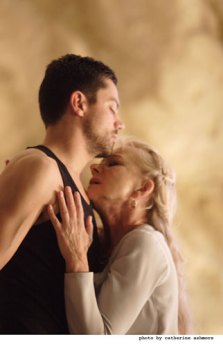The Media Festival Arts which took place on 8-10 September at the Roundhouse, London had a bit of a scattered remit. If it had to do with new media technology and art, in was in. So while a lot of sessions were irrelevant to a lot of delegates (and a lot of delegate-pass swapping took place), there were some gems.
I could only attend half a day, but here’s what caught my attention:
- Intriguing, even though a many organisations seem to have decided to un-like it, or at least are suspicious of its motives and methodology. Maybe it does all boil down to ‘show me the money’? Given that it is a whole new platform and not just a re-flowing of your website content, and given that views will expect a certain quality when they sit in front of their TV screens, who are arts organisations going to afford to create content? Content on this platform will have to be exciting, an ‘event’, something experiential to ‘pull’ people in. We can’t just view it as a form of internet in which just about everything is out there if you search hard enough. But for the like of independent film-makers it has the potential to change the distribution game significantly.
- On the other hand, should Project Canvas be a place to talk about art – as TV currently is – or to be art?
- On the other other hand, the Project Canvas set-top boxes will have geo-locators to spot where they are, so producers could tag their content as for local audiences only. Neat, huh? Although I hate to think what MI6 might do with the information!
- In the first instance, according to new Project Canvas Chair Kip Meek, we should view it as ‘a way of getting your stuff out there to people who wouldn’t otherwise see it.’
Collaborations and partnerships session discussed NT Live, the launch of The Girl Who Played With Fire film and the Last Word Challenge books. What could they teach us?
- That the NT Live pilot summer brought a 25% increase in audiences over those that attend the South Bank venue. They were rarely totally new to theatre-going, but used it as a way of accessing the National’s performances elsewhere in the country or of trying out new type of plays with relatively low risk. While the NT wanted the ‘sense of occasion’ to emulate that of attending a theatre performance, in fact audiences experienced it as almost a whole new artform; and many felt more emotionally engaged with the performance than those attending the actual live performance.
- There was a lot that all the collaborators in NT Live learned about establishing which brand values it was important to hang on to in creating the experience, and where they had to adjust to collaborators’ ways of working. For example, the NT wanted to keep the emphasis on the showings being one-off and time-fixed, while deferring to the cinemas’ knowledge of marketing to cinema audiences and how they behave.
- The collaboration behind the launch of The Girl Who Played With Fire film stressed that the key to success had been to create many ‘touch points’ between the potential audience and the film and to view the film micro-site not as an end in itself but as a springboard for activities such as Facebook campaigns or games through the FindAnyFilm website.
- The team promoting the Last Word Challenge books stressed the importance of respecting brand values of the New Scientist Magazine, generators of the books and those of the Last Word column in the magazine, which has always been inherently interactive. That enabled them to produce quizzes and challenges that complement rather than replicate the books.




